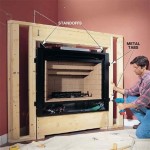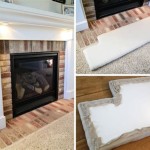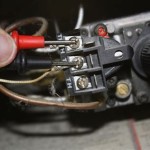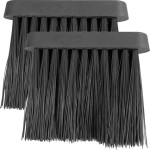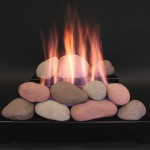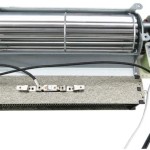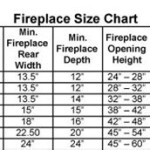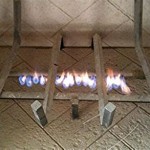Protecting Your Little One: A Comprehensive Guide to Fireplace Guards for Babies
Fireplaces offer warmth and ambiance, especially during colder months. However, for households with babies and toddlers, a fireplace presents a significant safety hazard. Children are naturally curious and often lack the understanding of potential dangers. A fireplace guard acts as a crucial barrier, preventing accidental burns and injuries. This article provides a detailed overview of fireplace guards, covering various types, important safety considerations, installation tips, and maintenance recommendations.
Understanding the Risks: Why Fireplace Guards are Essential
Babies and toddlers explore their environment primarily through touch. They may be drawn to the warmth and visual appeal of a fireplace, unaware of the potential for severe burns. Even if the fire is not actively burning, the hot glass or metal surfaces can remain dangerously hot for an extended period. Contact with these surfaces can result in painful burns that require medical attention. Moreover, embers, if present, and tools associated with the fireplace, like pokers and tongs, pose significant risks of injury if accessed by a young child. A fireplace guard effectively eliminates these risks by creating a physical barrier that prevents access to the fireplace and its surrounding hazards. It provides peace of mind for parents and caregivers, knowing that their child is protected from a potentially dangerous situation.
Beyond direct contact with hot surfaces, there are other safety concerns related to fireplaces. Small objects or toys could be thrown into the fireplace, potentially creating smoke or fire hazards. A fireplace guard prevents these accidental introductions of foreign objects, maintaining a safer environment. Furthermore, without a guard, children may attempt to climb on or around the fireplace, increasing the risk of falls and injuries. The presence of a sturdy and well-installed fireplace guard mitigates these risks, providing a stable and secure barrier.
The need for a fireplace guard becomes even more pronounced as babies begin to crawl and explore their surroundings more actively. Their mobility increases their ability to reach potentially dangerous areas. It's crucial to proactively address fireplace safety before a child becomes mobile. Waiting until a child shows interest in the fireplace could be too late. Implementing safety measures, such as installing a fireplace guard, early on ensures that children are protected from the moment they begin exploring.
Types of Fireplace Guards: Selecting the Right Option for Your Home
The market offers a variety of fireplace guards designed to meet different needs and preferences. Choosing the right type depends on factors such as the size and shape of the fireplace opening, the existing décor, and the desired level of portability and security. Understanding the different types available is crucial for making an informed decision.
Freestanding Fireplace Guards: These are typically constructed from metal and feature a mesh screen or bars to prevent access to the fireplace. Freestanding guards are often relatively lightweight and can be easily moved as needed. However, they may not provide the most secure barrier, especially for determined toddlers. Some models offer adjustable widths to accommodate different fireplace sizes. Look for freestanding guards with a sturdy base to prevent tipping and ensure they are positioned securely in front of the fireplace opening.
Mounted Fireplace Guards: These guards are attached directly to the wall or surrounding structure, providing a more secure and permanent barrier. Mounted guards are often preferred for households with active toddlers or pets, as they are less likely to be moved or knocked over. Installation typically involves drilling and screwing the guard into the wall, so it's essential to carefully consider the placement and ensure that the wall is structurally sound. Mounted guards are available in various styles and materials to complement different home décor.
Hearth Gates: These are designed to enclose the entire hearth area, providing a larger safety zone around the fireplace. Hearth gates are particularly useful for homes with raised hearths or unconventional fireplace designs. They typically consist of multiple panels that can be adjusted to fit the specific dimensions of the hearth. Hearth gates offer a comprehensive solution for preventing access to the fireplace and surrounding area, providing enhanced safety and security.
Custom-Built Fireplace Guards: For unique fireplace designs or specific safety requirements, a custom-built fireplace guard may be the best option. These guards are designed and fabricated to fit the exact dimensions and specifications of the fireplace. Custom-built guards can offer a higher level of security and aesthetic appeal, seamlessly integrating with the existing décor. While custom-built guards may be more expensive than standard models, they offer a tailored solution for ensuring child safety.
When selecting a fireplace guard, it's essential to consider the material. Metal guards are typically the most durable and heat-resistant, while wooden guards may offer a more aesthetically pleasing appearance. However, wooden guards may not be suitable for use with open fires or fireplaces that generate high levels of heat. Always choose a material that is appropriate for the type of fireplace and the level of heat it generates.
Key Safety Considerations: Ensuring Effective Protection
Choosing the right type of fireplace guard is only the first step. Proper installation, maintenance, and ongoing vigilance are essential for ensuring its effectiveness in protecting children from fireplace-related hazards. Adhering to safety guidelines and taking proactive measures is crucial for maintaining a safe environment.
Proper Installation: Incorrect installation can compromise the effectiveness of a fireplace guard. Always follow the manufacturer's instructions carefully when installing the guard. For mounted guards, ensure that the mounting hardware is appropriate for the wall material and that the guard is securely attached. Freestanding guards should be positioned securely in front of the fireplace, and their stability should be checked regularly. If unsure about the installation process, consider hiring a professional installer to ensure that the guard is properly installed and meets safety standards.
Regular Inspection and Maintenance: Fireplace guards should be inspected regularly for any signs of damage or wear. Check for loose screws, broken hinges, or damaged mesh screens. Repair or replace any damaged parts immediately. Clean the guard regularly to remove dust and debris, which can accumulate over time. Regular maintenance ensures that the guard remains in good working condition and provides effective protection.
Supervision and Education: While a fireplace guard provides a physical barrier, it's essential to supplement it with supervision and education. Teach children about the dangers of fire and the importance of staying away from the fireplace. Explain that the fireplace is not a toy and that they should never touch it, even when it's not in use. Supervise children closely when they are near the fireplace, even with a guard in place. Reinforce safety rules regularly to ensure that children understand the importance of fire safety.
Heat Resistance and Material Safety: Ensure that the fireplace guard is made of heat-resistant materials that can withstand the high temperatures generated by the fireplace. Avoid using guards made of flammable materials, such as plastic or fabric. Check that the guard is free of sharp edges or small parts that could pose a choking hazard to young children. Look for guards that meet safety standards and have been tested for heat resistance and durability.
Adjustability and Fit: Choose a fireplace guard that is adjustable to fit the specific dimensions of the fireplace opening. The guard should fit snugly against the fireplace, without any gaps or openings that a child could squeeze through. Ensure that the guard is tall enough to prevent a child from climbing over it. A proper fit is essential for ensuring that the guard provides effective protection and prevents access to the fireplace.
Storage When Not in Use: If the fireplace guard is not in use, store it in a safe place where it won't pose a tripping hazard or obstruct pathways. Ensure that the storage location is dry and protected from the elements to prevent damage or corrosion. Proper storage helps to prolong the life of the guard and ensures that it is ready for use when needed.
Investing in a high-quality fireplace guard and following these safety guidelines can significantly reduce the risk of fireplace-related injuries to children. Prioritizing safety and taking proactive measures is essential for creating a safe and comfortable environment for families with young children.

Babylo Classic Fire Guard Smyths Toys

Baby Dan White Flex Configure L Hearth Guard Black Country Metalworks

Baby Dan Black Flex Configure Xl Hearth Guard Country Metalworks

70 X 130cm Baby Fire Guard 5 Panel Also Configure As 20 230cm By Babasafe Save Now Motherandbaby Ie

How To Choose The Best Fireguard Babasafe Co

Baby Fire Guard

Babysafetyfoam Com Baby Proofing Fireplace Hearth Guard Bumper Pad Safety Cushion Cover Protection

Babyproof Your Hearth And Fireplace With These Simple Tips Tricks

How To Baby Proof Your Fireplace Pa Guide Proofing Toddler

5 Panel Fireplace Tree Fence Fire Guard Baby Gate Safety Dog Quildinc

